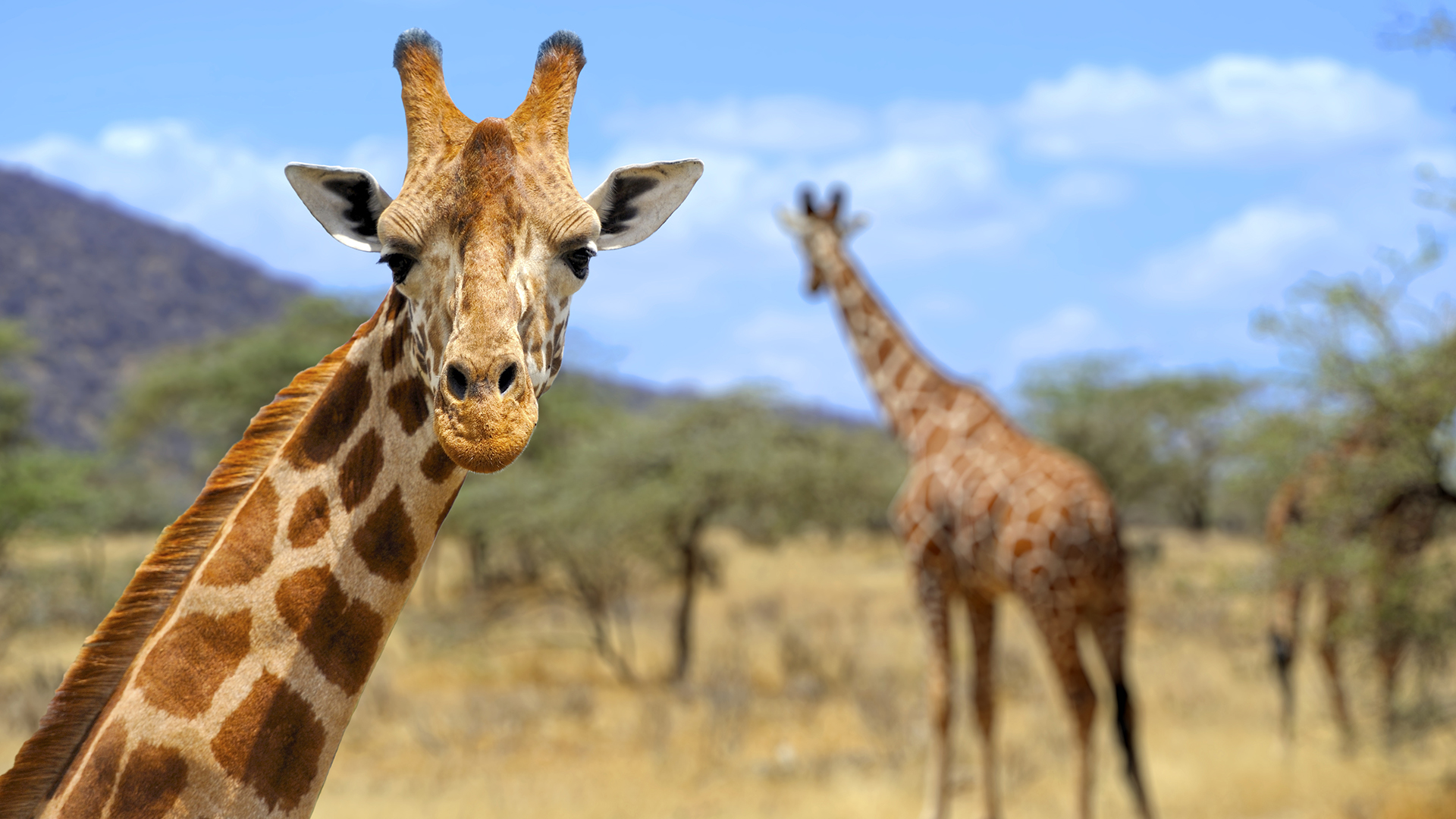Lightning killed 2 giraffes in South Africa: Were they doomed by their height?
Thousands of animals worldwide (not just giraffes) are injured by lightning each year.

Lightning recently killed two giraffes in South Africa; one of the giraffes — a 5-year-old female — had a fractured skull and a broken ossicone (giraffes' knoblike horns), indicating that she died after a lightning strike directly to the head.
The giraffes were found on March 2 after a thunderstorm in Rockwood, a private nature reserve located about 112 miles (180 kilometers) to the west of Kimberley, South Africa.
Ciska P. J. Scheijen, a student in the Department of Animal, Wildlife and Grassland Sciences at the University of the Free State in Bloemfontein, South Africa, described the fatal event on Sept. 8 in the African Journal of Ecology, suggesting that the animals' height may have increased their risk for electrocution during the storm, turning them into living lightning rods.
Related: Rare white giraffe photographed
However, no peer-reviewed studies have shown that giraffes are more prone to lightning strikes than other animals, Live Science reported in 2017, and Scheijen did not present any new data on the subject.
There are four ways that lightning strikes can kill an animal, according to Schiejen's paper. It can strike the animal directly or it can hit as a "side flash," arcing into the animal's body after striking a nearby object. It can also be lethal through "touch potential," when the electrical current jolts through an animal that is in direct contact with a lightning-struck object. Finally, lightning can also deliver a deadly current through "step potential," which electrifies the animal through the ground.
The giraffes in South Africa died surrounded by bushes and grasses, but there were no trees nearby; an adult male giraffe stands about 18 feet (5.5 meters) tall, while females measure about 14 feet (4.3 m) tall; so the giraffes would easily have been the tallest targets in the area. The body of the second giraffe, a female about 4 years old, was found about 23 feet (7 m) from the giraffe with the cracked skull. There were no visible signs of injury on the younger giraffe, hinting that it received a lethal dose of electricity through the ground as its companion was directly struck, Scheijen reported.
Sign up for the Live Science daily newsletter now
Get the world’s most fascinating discoveries delivered straight to your inbox.
"Both giraffes had a very strong ammonia-like smell," Scheijen added. Researchers had previously mentioned a similar odor surrounding a lightning-struck giraffe, in a study published in 2014 in the journal Vulture News.
Death from above
Thousands of animals are injured each year by lightning, according to a study published in 2012 in the International Journal of Biometeorology. And some animals are more vulnerable than others. Those with "a large separation between their front and back feet" are more likely to suffer significant lightning damage because their feet can act as points in a circuit that channel voltage, after lightning strikes the ground or a nearby object, according to the study.
Ground current electrocution is the most common cause of group death for animals during electrical storms. In one exceptional event in 2016, lightning killed 323 reindeer — including seven calves — through ground current, as the reindeer huddled close together during the storm.
In the case of the South African giraffes, Scheijen concluded that a direct lightning strike killed the older female, "while the other female, found some 7 m [23 feet] away, died likely either from a side flash or step potential," Scheijen reported.
"Given that lightning bolts tend to hit tall objects, especially in open areas, the height of giraffes may make them particularly vulnerable to fatal electrocution," Scheijen said.
Originally published on Live Science.

Mindy Weisberger is an editor at Scholastic and a former Live Science channel editor and senior writer. She has reported on general science, covering climate change, paleontology, biology and space. Mindy studied film at Columbia University; prior to Live Science she produced, wrote and directed media for the American Museum of Natural History in New York City. Her videos about dinosaurs, astrophysics, biodiversity and evolution appear in museums and science centers worldwide, earning awards such as the CINE Golden Eagle and the Communicator Award of Excellence. Her writing has also appeared in Scientific American, The Washington Post and How It Works Magazine. Her book "Rise of the Zombie Bugs: The Surprising Science of Parasitic Mind Control" will be published in spring 2025 by Johns Hopkins University Press.









